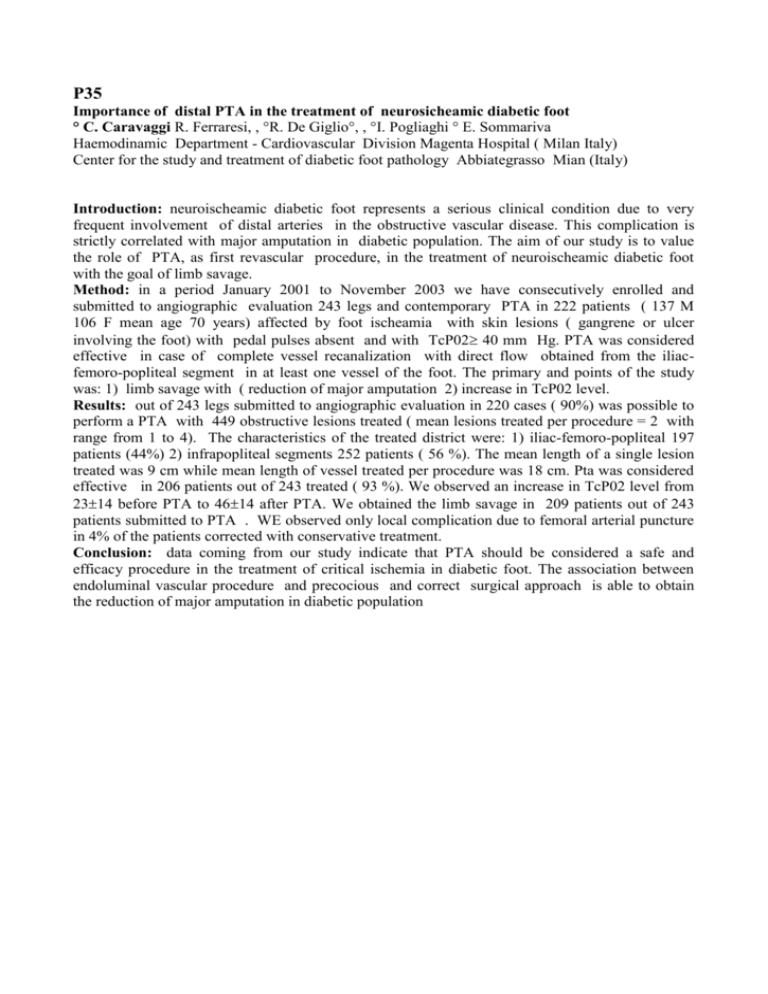Importance of distal PTA in the treatment of neurosicheamic
advertisement

P35 Importance of distal PTA in the treatment of neurosicheamic diabetic foot ° C. Caravaggi R. Ferraresi, , °R. De Giglio°, , °I. Pogliaghi ° E. Sommariva Haemodinamic Department - Cardiovascular Division Magenta Hospital ( Milan Italy) Center for the study and treatment of diabetic foot pathology Abbiategrasso Mian (Italy) Introduction: neuroischeamic diabetic foot represents a serious clinical condition due to very frequent involvement of distal arteries in the obstructive vascular disease. This complication is strictly correlated with major amputation in diabetic population. The aim of our study is to value the role of PTA, as first revascular procedure, in the treatment of neuroischeamic diabetic foot with the goal of limb savage. Method: in a period January 2001 to November 2003 we have consecutively enrolled and submitted to angiographic evaluation 243 legs and contemporary PTA in 222 patients ( 137 M 106 F mean age 70 years) affected by foot ischeamia with skin lesions ( gangrene or ulcer involving the foot) with pedal pulses absent and with TcP02 40 mm Hg. PTA was considered effective in case of complete vessel recanalization with direct flow obtained from the iliacfemoro-popliteal segment in at least one vessel of the foot. The primary and points of the study was: 1) limb savage with ( reduction of major amputation 2) increase in TcP02 level. Results: out of 243 legs submitted to angiographic evaluation in 220 cases ( 90%) was possible to perform a PTA with 449 obstructive lesions treated ( mean lesions treated per procedure = 2 with range from 1 to 4). The characteristics of the treated district were: 1) iliac-femoro-popliteal 197 patients (44%) 2) infrapopliteal segments 252 patients ( 56 %). The mean length of a single lesion treated was 9 cm while mean length of vessel treated per procedure was 18 cm. Pta was considered effective in 206 patients out of 243 treated ( 93 %). We observed an increase in TcP02 level from 2314 before PTA to 4614 after PTA. We obtained the limb savage in 209 patients out of 243 patients submitted to PTA . WE observed only local complication due to femoral arterial puncture in 4% of the patients corrected with conservative treatment. Conclusion: data coming from our study indicate that PTA should be considered a safe and efficacy procedure in the treatment of critical ischemia in diabetic foot. The association between endoluminal vascular procedure and precocious and correct surgical approach is able to obtain the reduction of major amputation in diabetic population








![Medicaid Letter [MS Word-35k] - American Professional Wound](http://s3.studylib.net/store/data/005829391_1-784f070d558f3d0f3590313137e1be4c-300x300.png)